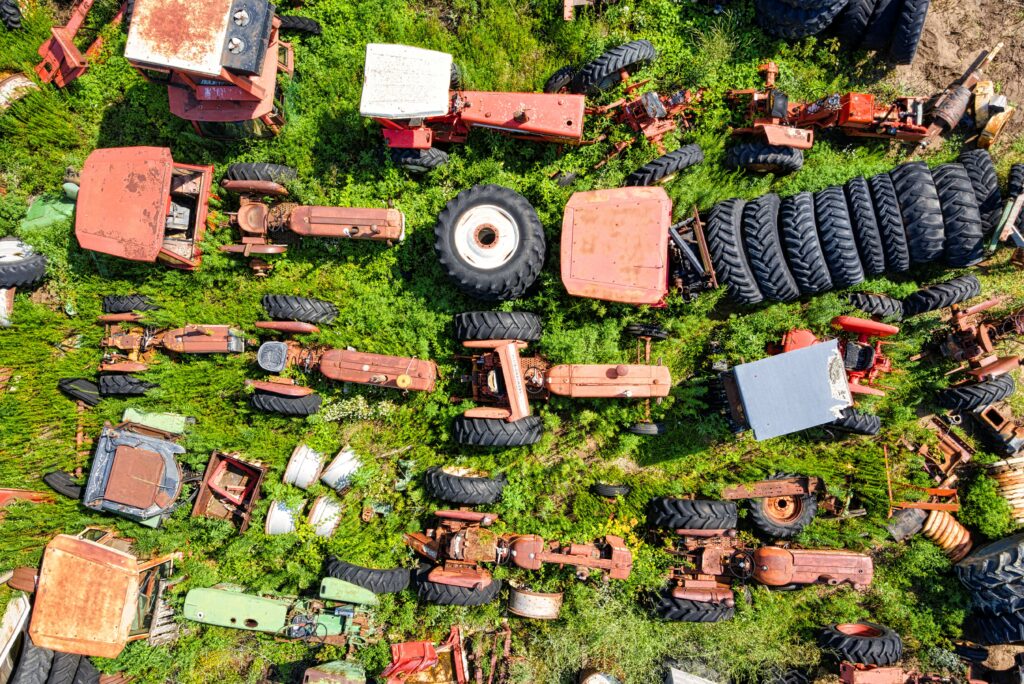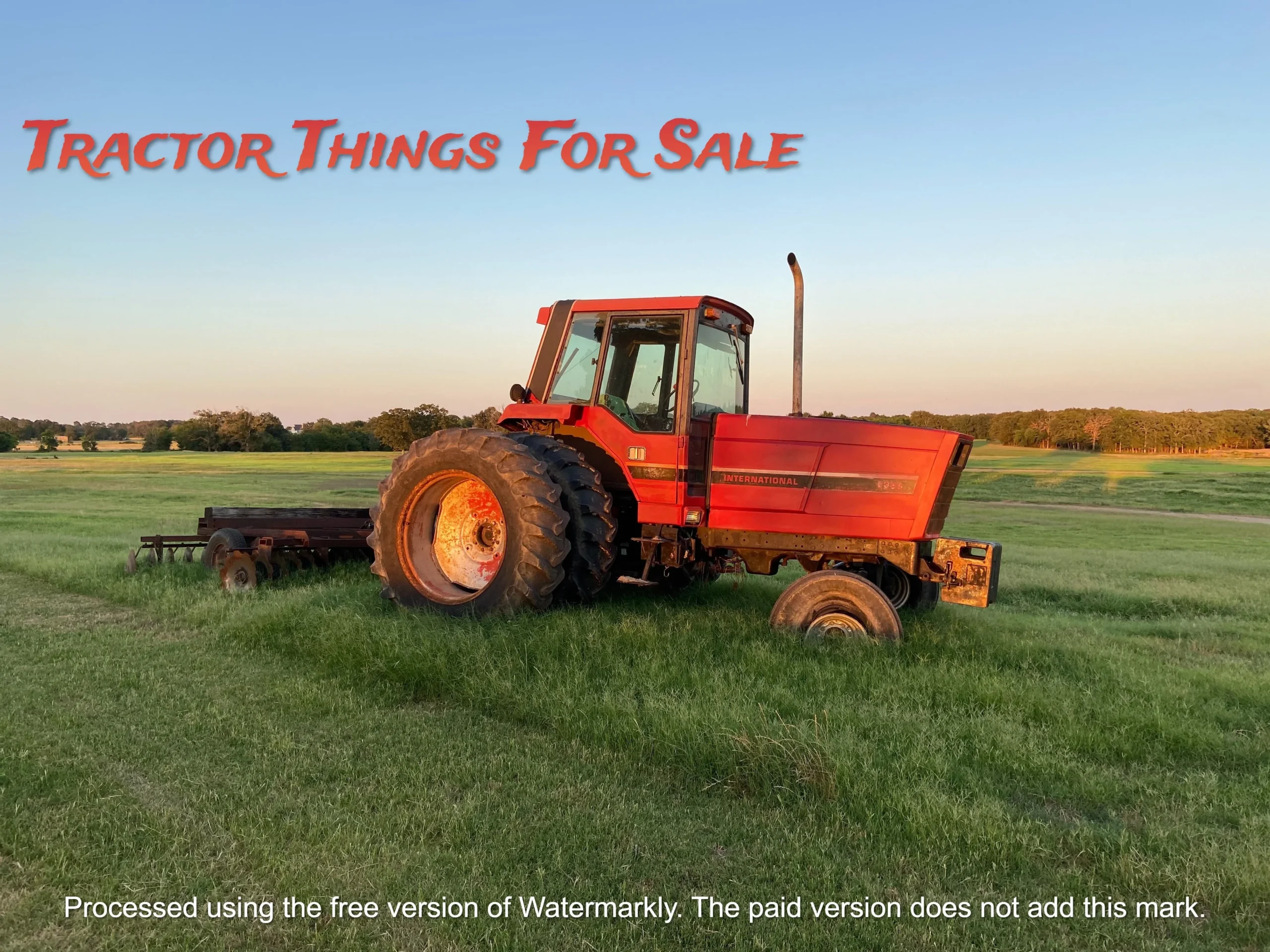Explore a wide selection of tractors, parts, and accessories for sale. Find top brands, reliable equipment, and great deals to keep your farm running smoothly.
Introduction
Tractors are an essential piece of farm equipment for many agricultural operations. From small hobby farms to large commercial enterprises, tractors provide the power and versatility needed to plow fields, plant crops, mow grass, and perform countless other tasks. When it’s time to purchase a new or used tractor, there are many factors to consider – size, horsepower, attachments, price and more. This article will provide an overview of the different types of tractors and implements for sale, what to look for when buying, and frequently asked questions to help you find the right tractor and implements for your needs.
Types of Tractors
Compact Tractors
Compact tractors, also known as utility tractors, typically range from 20 to 50 horsepower. They are designed for small acreages, landscaping jobs, grounds maintenance and lifting/loading tasks. Compact tractors are easy to operate and maneuver in tight spaces. Popular compact tractor models include John Deere 1025R, Kubota BX1880 and New Holland Workmaster 25S. They can be equipped with mid- and rear-mounted PTOs to run a variety of implements.
Subcompact Tractors
Subcompact tractors are the smallest tractor class, offering 10 to 25 horsepower. Their small size makes them well-suited for homeowners, residential mowing and basic projects. Leading subcompact tractor brands include John Deere 1023E, Kubota BX23S and Massey Ferguson GC1723E. These tractors can utilize front, mid and rear-mounted attachments.
Utility Tractors
Utility tractors provide 25 to 100 horsepower for medium-sized farms and ranches. They are larger than compact tractors and have more power and capability to handle heavier implements. Popular models include John Deere 5100E, Massey Ferguson GC1700 and New Holland Workmaster 55. Common implements attached include box blades, tillers and front-end loaders.
Row Crop Tractors
As the name implies, row crop tractors are designed to plow, plant and cultivate row crops. They range from about 40 to more than 200 horsepower. Row crop tractors have narrow front ends and oversized rear tires to maneuver between crop rows. Leading brands include John Deere 8295R, Case IH Magnum 250 and AGCO White Planters 9800. Chisel plows, cultivators, planters and combines are commonly used with row crop tractors.
4WD Tractors
4-wheel drive, or 4WD, tractors provide extra traction and stability on rough terrain. 4WD allows the operator to engage all four wheels to pull through mud, snow and hills. 4WD tractors range from utility models to high-horsepower tractors. Popular options are John Deere 6105E, New Holland T5.115 and Massey Ferguson GC1700. They utilize a variety of front and rear 3-point, drawbar and PTO-driven implements.
Articulated 4WD Tractors
Articulated tractors have a flexible joint that allows the front wheels to turn more sharply than a traditional 4WD tractor. Leading articulated tractors include John Deere 9RX series, Case IH Steiger/Quadtrac and New Holland T9. These powerful tractors typically have more than 300 horsepower to handle heavy fieldwork.
Other Tractors
There are some additional, more specialized tractors to consider:
- Orchard tractors – Designed for working in orchards and vineyards with narrow chassis to fit between rows
- Plantation tractors – For plowing, planting and maintenance on plantations
- Vineyard tractors – Specialized narrow tractors for vineyards
- PTO tractors – Focus on powering implements through a rear-mounted PTO
- Industrial tractors – For heavy lifting, digging and construction sites

Common Tractor Implements
Tractors serve as valuable power units, but it’s the implements that allow you to get work done. Here are some of the most popular tractor implements:
- Plows – Chisel, disk, moldboard and no-till plows for turning and preparing soil
- Tillers – Rotary tillers and cultivators to churn and mix soil
- Box Blades – Level and scrape soil for smoothing and grading land
- Loaders – Front-end and telescopic loaders to lift and move materials
- Backhoes – For digging holes and trenches
- Mowers – Rotary cutters, finish mowers and flail mowers to cut grass and vegetation
- Rakes – Shaker, wheel, and tedder rakes to gather cut hay and forage
- Spreaders – For distributing seed, fertilizer and compost over soil
- Seeders – Designed for planting seeds at optimal spacing and depth
- Planters – For planting seeds or seedlings in rows
- Sprayers – Mounted tanks to apply fertilizer, pesticides and herbicides
- Augers – Move grain from a wagon or bin into a truck or storage container
- Blades – Snow blades, utility blades and box scrapers to move and level materials
- Post hole diggers – Attachments tailored for digging post holes for fencing
What to Look for When Buying a Tractor
When shopping for a new or used tractor, keep these key factors in mind:
Intended use – Consider the primary jobs you need the tractor to perform. This will help determine size and features needed. Those looking to mow small yards and move dirt may opt for a compact tractor. Larger acreages and heavy fieldwork require more horsepower.
Horsepower – Engine horsepower impacts pulling strength and attachment options. Light loads and implements require 20 to 40 HP. Heavy implements need 40 to 100+ HP.
New vs used – New tractors offer the latest technology and warranty protection but cost more. Used tractors are more affordable but may need repairs and lack newer features.
Size and maneuverability – A larger tractor can provide more power, but a compact one offers better mobility in tight spaces. Evaluate access to storage and work areas.
Comfort and safety – Look for ergonomic controls, visibility, rollover protection and other operator-friendly features. Newer cabs offer climate control options.
Attachments – Determine if you need 3-point hitch, PTO, drawbar, front loader or other implement capabilities. This impacts selection.
Price/budget – New compact tractors may cost $15,000-$25,000. Larger new tractors often run $50,000-$100,000+. Evaluate operating costs, financing options and overall value.
Brands – Major brands to consider include John Deere, Kubota, Mahindra, Case IH and New Holland. Look at models, parts availability and dealer support.
Test drive – Test drive tractors to assess comfort, control, power and suitability for the intended use. Dealer demonstrations are recommended.
Maintenance – Ask about recommended maintenance, service intervals and how to check fluids, tires, filters etc. Look for good access to these areas.
Safety training – If new to tractors, take a training course to learn safe practices before operating. Review safety procedures in the manual.
Where to Buy?
New tractors can be purchased at authorized dealerships that offer a range of models, attachments, financing, service and support. Dealers are the best option for purchasing new John Deere, Case IH, Kubota and most other brands. Online tractor retailers may have a limited selection of new and used tractors available.
For used, consider these options:
- Dealers – May have a used inventory of trade-ins and refurbished models
- Consignment auctions – Inspect and bid on used tractors from other owners
- Farm auctions – Can find well-maintained older tractors
- Estate sales – Opportunity to purchase from an owner who is retiring or downsizing
- Private sellers – Buy directly from another farmer or owner through ads or networks
- Online sites – Research listings for nearby used tractors for sale by owner
No matter where you buy, carefully inspect any used tractor, take it for a test drive, and have it checked by a trusted mechanic before purchasing. Most importantly, make sure it fits your physical environment, budget and workload to maximize your investment.
FAQs
Q1: How much horsepower do I need?
A: This depends on the size of implements and load capacity needed. Typical ranges:
- Light duty: Under 25 HP
- Medium duty: 25-50 HP
- Heavy duty: 50-100+ HP
Q2: What’s the difference between 2WD and 4WD tractors?
A: 2WD tractors power just the rear wheels. They work well for basic farming on flat land. 4WD powers all wheels for extra traction in mud, hills and tough conditions.
Q3: Should I buy new or used?
A: New tractors offer the latest features and a full warranty but cost more. Quality used tractors provide more value but may need repairs. Consider budget and needs.
Q4: What attachments do I need?
A: Common implements include plows, tillers, loaders, mowers, rakes, spreaders, blades and more. Choose ones suiting your property maintenance and operation needs.
Q5: How much maintenance is required?
A: Follow the manual for service intervals. Expect to check fluids, change filters, inspect tires, clean off debris.

